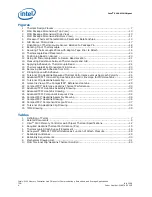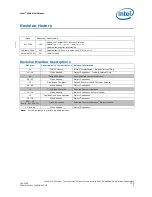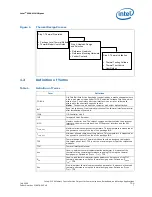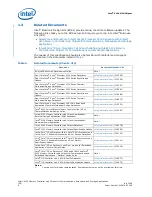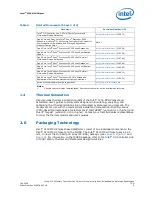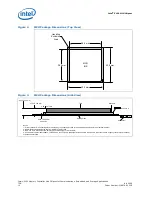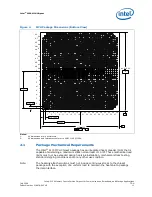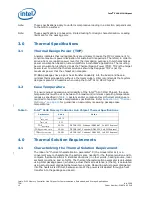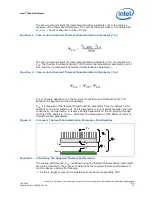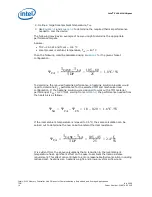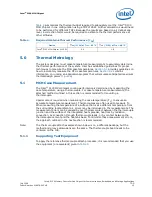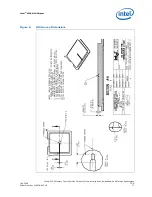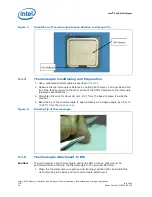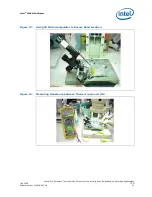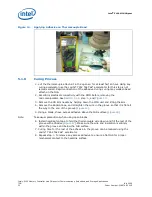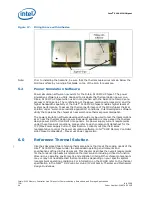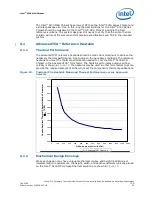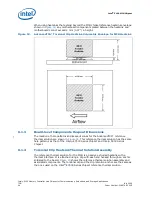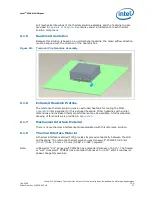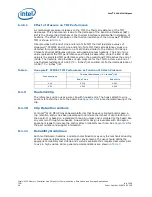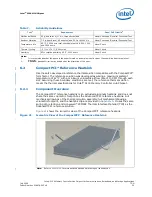
Intel
®
5100 MCH Chipset
Intel
®
5100 Memory Controller Hub Chipset for Communications, Embedded, and Storage Applications
TDG
July 2008
14
Order Number: 318676-003US
2. Define a target local ambient temperature, T
LA
.
3. Use
Equation 1
and
Equation 2
to determine the required thermal performance
needed to cool the device.
The following provides an example of how you might determine the appropriate
performance targets.
Assume:
• TDP = 25.0 W and T
CASE
= 105 °C
• Local processor ambient temperature, T
LA
, = 60 °C
Then the following could be calculated using
Equation 1
for the given chipset
configuration.
To determine the required heatsink performance, a heatsink solution provider would
need to determine
Ψ
CS
performance for the selected TIM and mechanical load
configuration. If the heatsink solution were designed to work with a TIM material
performing at
Ψ
CS
≤
0.20 °C/W, solving from
Equation 2
, the performance needed from
the heatsink is as follows.
If the local ambient temperature is relaxed to 45 °C, the same calculation can be
carried out to determine the new case-to-ambient thermal resistance.
It is evident from the above calculations that a reduction in the local ambient
temperature has a significant effect on the case-to-ambient thermal resistance
requirement. This effect can contribute to a more reasonable thermal solution including
reduced cost, heatsink size, heatsink weight, and a lower system airflow rate.
Ψ
CA
T
CASE
T
LA
–
TDP
-------------------------
105
60
–
25
---------------
1.8
°
C W
⁄
=
=
=
Ψ
SA
Ψ
CA
Ψ
CS
–
1.8
0.20
–
1.6
°
C W
⁄
=
=
=
Ψ
CA
T
CASE
T
LA
–
TDP
-------------------------
105
45
–
25
---------------
2.4
°
C
W
----
=
=
=




